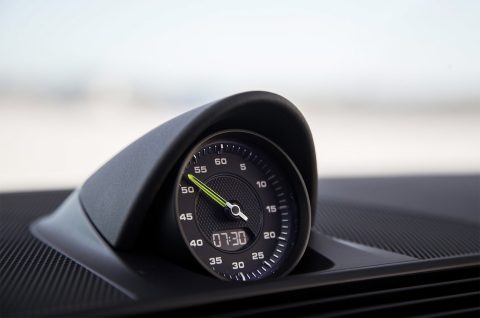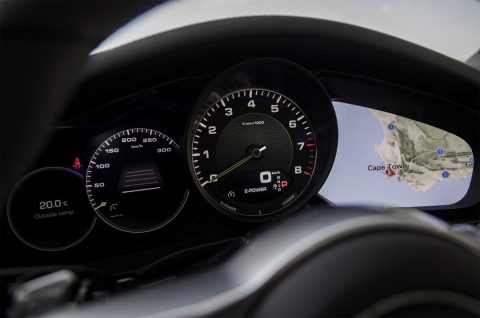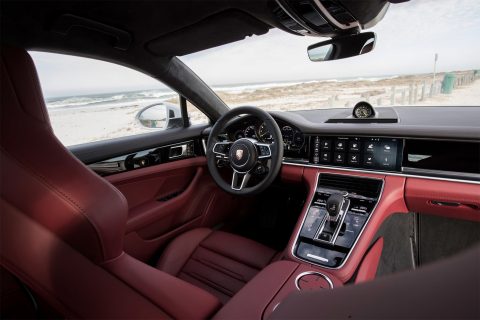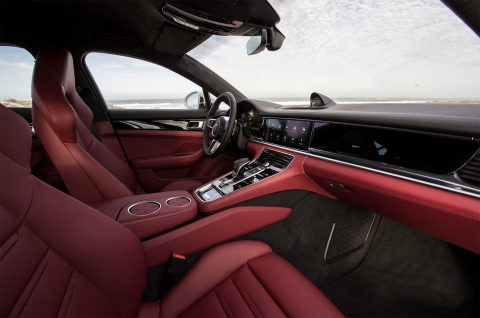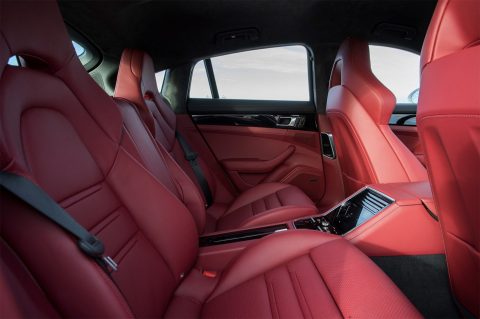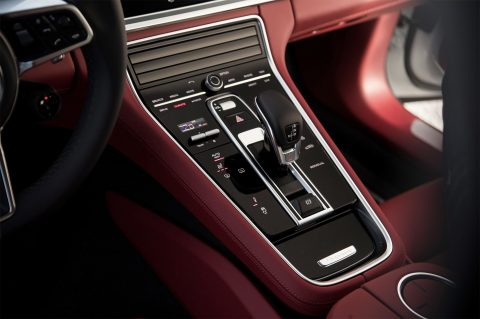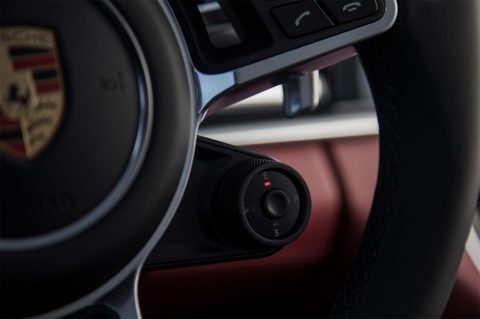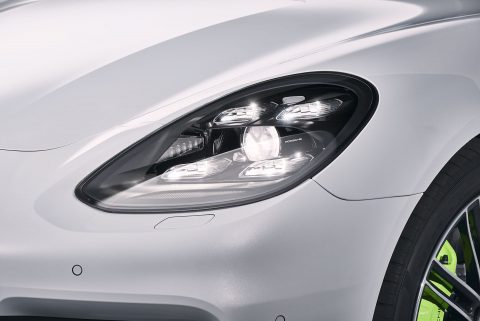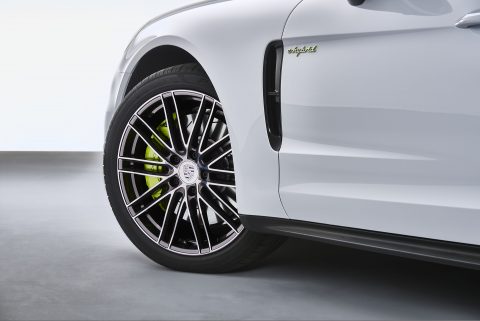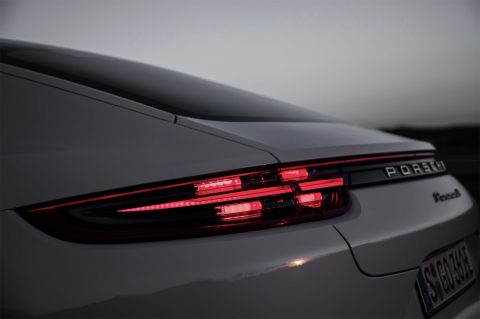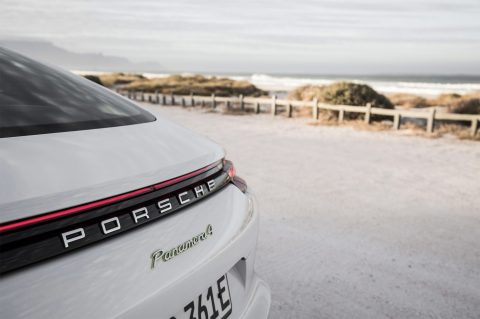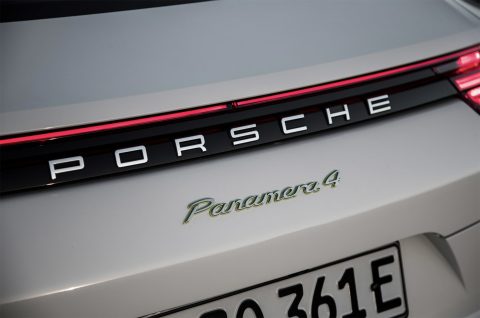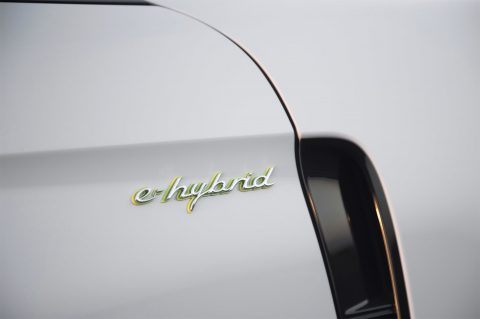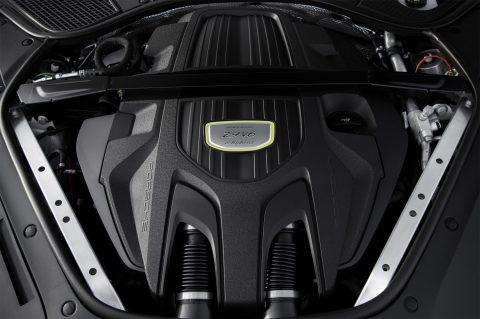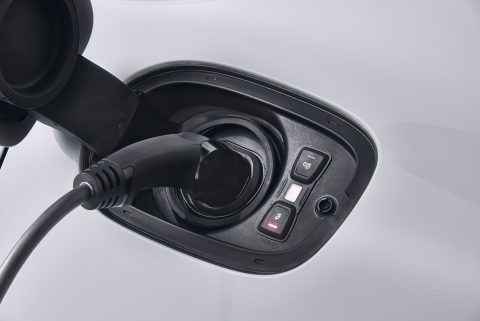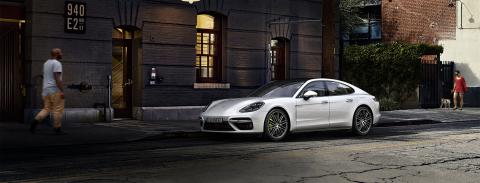
thank you very much, porsche lends its design and engineering pedigree to the next generation of alternative energy mobility. the panamera saloon compromises some sports car feel but skillfully combines luxury with genuine driving thrills outperforming the s class and 7 series. the 4 e is your entry level in this class. there’s a v-8 turbo s e-hybrid coming in the fall of 2017 – $185,000 usd base and a 0-60mph in 3.2 sec
[ facts ]
concept > all wheel drive v-6 hybrid luxury sports saloon
sports plus mode > tightens suspension / electric energy used as booster vs efficiency / manual shift option
layout > 4-door 4-passenger front engine
suspension > air that’s adjustable
[ specs ]
engine > 2.9l twin-turbo dohc 24-valve v-6, 330 hp at 5,250-6,500 rpm, 331 lb-ft from 1,750-5,000 rpm
electric motor > 136 hp and 295 lb-ft / combined output 462 hp at 6,000 rpm and 516 lb-ft at 1,100-4,500 rpm / 31 miles on electric power alone / 86 mph without gas engine.
transmission > 8-speed dual clutch automatic
epa mileage: n/a
l x w x h > 198.8 x 85.2 x 56.0 in
wheelbase > 116.1 in
weight > 4,784 lb
0-60 mph > 4.4 sec
top speed > 172 mph
on sale > summer 2017
price > $99,600 usd
battery > liquid cooled 14.1 kwh lithium ion battery
charging > 12.5 hours to charge via a 120-volt system / 2.4 hours with optional 7.2 kw on-board charger with a 240-volt system
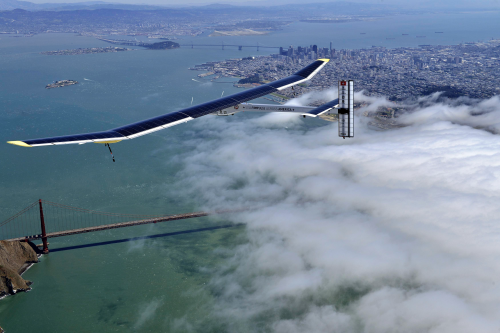
photo | reuters | 23 april 2013
Solar Impulse flies over the Golden Gate Bridge, preparing for cross-country flight in May 2013. The cross-country electric aircraft is a hybrid propulsion system running off of solar and then switching over to battery night flying and landing. There’s something about this plane that inspires the best, even the solar critics.
[ solar impulse ] [ solar impulse on ‘objects‘ ]
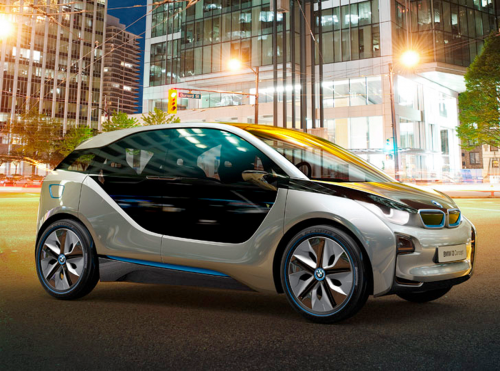
BMW recently unveils two concept cars, the all electric i3 concept and a hybrid i8 concept. There’s no question which car I would like to have. But let’s talk about the all electric i3, designed for mass production, an urban environment, and no slouch in performance from a standstill start. an electric motor, maximum torque is developed from standstill, in contrast to an internal combustion engine where torque increases with engine rpm. This makes the BMW i3 Concept highly agile and provides impressive acceleration. The BMW i3 Concept accomplishes 0-60 km/h (37 mph) in under four seconds and 0-100 km/h (62 mph) in under eight seconds.
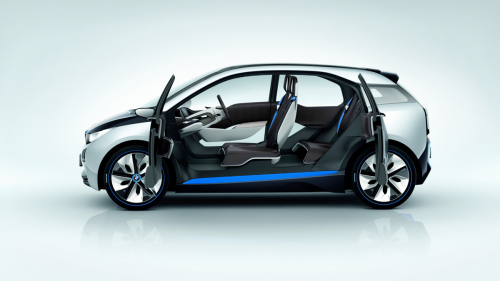
wide-opening opposing “coach” doors
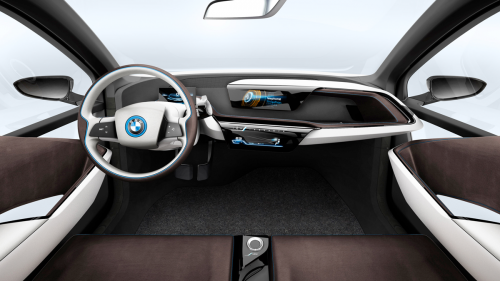
The drivetrain called eDrive consists of an agile electric motor developed and built by BMW, innovative battery technology and an intelligent engine management system. The i3 Concept is nimble and a joy to drive.
The interior Life module is open and airy. The use of renewable raw materials is another defining characteristic of the interior, offering passengers a further means of “experiencing” the sustainability of the vehicle. Parts of the instrument panel and door paneling are visibly made from natural fibers. The car’s footprint is small but has four seats, wide-opening opposing “coach” doors, a boot capacity of around 200 liters and an additional functional compartment in the front. It’s also an intelligent car taking stress off of the urban driving experience.mThe BMW i3 is set for launch in 2013
[ bmw ] [ bmw i8 concept ]

Philips’ recently debuted the Microbial Home Probe, a concept project that takes sustainable design to new heights with bacteria-powered bathroom and home products. Most of the products in the Apothecary line operate with the Bio-Light system, a community of microbes with bioluminescent properties that live in handblown glass cells in a larger, steel, honeycomb-shaped matrix. Just how much light does bacteria emit? No much, actually. So while it’s not practical for general household lighting it’s a very exciting first step towards thinking way out of the box when it comes to alternative energy sources.
The same system is used to power a line of bathroom mirrors straight out of a sci-fi fantasy. When you look into the mirror, sensors analyze the condition of your skin and eyes. It even takes a sample of your breath and looks for possible dietary problems and burgeoning oral issues like tooth decay. The toilet analyzes your stool and the shower checks the condition of your skin and hair. It reads your sweat and anything else you wash off your body. Then, once all that data is recorded and processed, you stand in front of a full-length mirror and the results are projected onto your corresponding body parts, highlighting problems areas and suggesting solutions. For example, if your iron levels are down, it might suggest eating some leafy greens, or if your hair is greasier than usual, then, you know, whatever the solution for that is.
In addition to the fancy mirror, there’s also a squatting toilet, which, from the looks of it, requires you to lower yourself down and hold onto the handle. Maybe they’ll come out with a throne-style model (as its called in the toilet biz) for those of us who prefer a seated experience. One of my favorite products from the home part of the Microbial Home Probe concept is the Paternoster Plastic Waste Up-Cycler, a Willy Wonky meets modern design take on recycling. You put the plastic goods in the golden funnel and crank them through with the handle. After a few weeks, the fungi inside break down the plastic with their super powerful enzymes. You’ll never have to wonder again whether your recycling is making it to your local plant or if it’s really being sent to a landfill.
There’s a lot more to this amazing and potentially revolutionary system, including an urban beehive and bio-digester island. Click to read more about the Philips’ Design Probes.

about perrin drumm

bike designs seem to be getting more and more ambitious all the time,
but Re:energy, from Korean designers jinsik kim and boseung seo, might just trump them all.

Not because it’s faster, sleeker, lighter or smaller, but because it enables the rider to create and store energy just by pedaling. The bike’s front wheel has a plug that supports both the standard 2-pronged plug and USB.


So, for example, if you’re riding your bike to the park to work on your computer, you can plug in your laptop or your phone, iPod, whatever. Or, once you bring your bike indoors after a ride, you can charge up with the energy you yourself created instead of plugging into the wall and paying for it. Re:energy won an iida 2010 design award.
designers: jinsik kim and boseung seo

about perrin drumm

good solar power video that few have seen.
[source: solardude1]

The Peugeot Capsule concept is a single-seat off-road vehicle that was inspired by do-everything adventure touring motorcycles like the Kawasaki KLR 650.


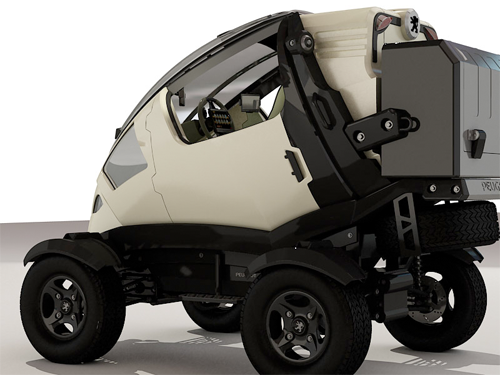
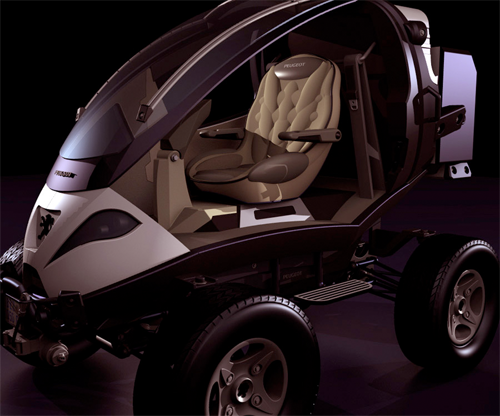
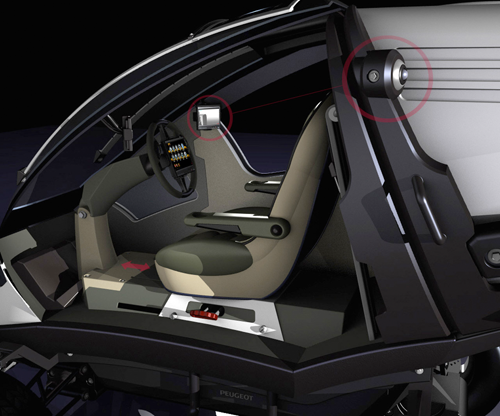
Unlike a motorcycle the Capsule would provide weather protection, plus enough storage to allow for extended overnight adventures. Of interest, a single touch screen that would control vehicle functions and offer internet-enabled satellite connectivity.
Electric motors would provide propulsion to all four wheels, and a roof-mounted solar panel would help keep the batteries topped up on sunny days. Once stopped, a removable luggage rack would double as a stool or desk at the campsite.
Designer: Alp Germaner
Producer: Peugeot
{VIA]






